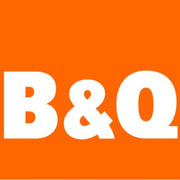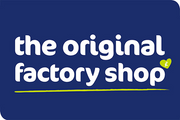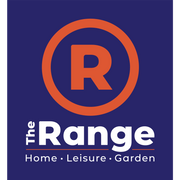Warehouse floors never stop working. While staff, pallet trucks, forklifts and equipment move constantly through the space, keeping it safe and ordered becomes a top priority. But it is not just about machinery or fast-paced activity. It is also about making sure every single person working there knows where to stand, walk, or drive. That is where floor safety marking systems come in. They act like road signs on the warehouse floor, guiding workers and vehicles while reducing the chance of accidents.
One simple but smart addition to many safety systems is non-skid tape. It is quick to apply, easy to follow, and helps stop slips before they happen. Alongside painted lines and safety signs, these markings give structure and clarity to areas that might otherwise cause confusion or risk. Whether it is marking safe walkways, showing loading zones, or giving people extra grip on slippery paths, the goal is always the same – make sure nobody is guessing where to go or step next.
Benefits Of Floor Safety Marking Systems
A warehouse floor can be difficult to organise without some visual help. Floor safety markings solve that problem by putting information exactly where people need it – on the ground in front of them. These markings play a key role in smoother operations and help reduce the risk of injuries or confusion.
Here are the main benefits:
- Better visibility: Markings stand out clearly against concrete or polished surfaces. They show lanes, hazards, or restricted spaces in a way that is hard to miss.
- Reduced accidents: Non-skid tape adds grip in places where spills or wet footwear might lead to slips. Combined with clear signs and lines, it lowers the chance of someone walking or driving into danger.
- Easier navigation: Warehouses can be big and complex. Colour-coded pathways or label zones help staff know where they are supposed to be, especially newer team members.
- Improved workflow: When everyone knows which zones are meant for walking, stacking, or loading, the space gets used more efficiently. Delays and confusion drop off.
Picture someone operating a pallet truck in a busy aisle. Without markings, it is easy to block foot traffic or overload a zone. But when lanes are clearly marked, it shows them exactly where to go while keeping foot traffic separate.
Over time, well-placed markings form habits. Staff begin to follow paths naturally without second-guessing. That change builds a safer, more predictable work setting.
Types Of Floor Safety Marking Systems
There is not just one way to mark a warehouse floor. Different systems suit different job types, and often a mix works best. Here is a look at some of the options commonly used.
1. Non-skid tape
This tape solves two problems. It adds traction underfoot and calls out key areas. Made with a gritty surface, it gives extra grip for ramps, walkways, steps, or damp zones. Bright colours or stripes make it easy to spot. Compared to paint, it is faster to apply and makes updating layouts simpler when things change.
2. Painted lines and symbols
Paint works well when a more lasting marking is needed. Zones for storage, loading, or traffic lanes can be painted on directly. If the surface is clean and the paint is designed for industrial floors, the markings will last longer. Still, in spaces with high traffic or chemical contact, touch-ups may be needed more often.
3. Floor signs and labels
In some places, a graphic or simple label tells more than a line or tape. Vinyl floor signs, stencilled text, or applied decals provide added detail. These work well in areas with complex instructions or regular shifts in purpose, like seasonal storage or dispatch areas. Floor signs are easier to update and highly flexible.
Deciding which methods suit your warehouse comes down to everyday activity. Lighter use areas might only need paint. High-traffic or spill-prone places benefit from non-skid tape and clear signage too. The most effective setups use a smart mix so that whether workers are walking, lifting, or driving, they stay within safe and orderly zones.
Best Practices For Implementing Floor Marking Systems
A proper marking system takes more than just tape and paint. It starts with knowing how your warehouse moves and where issues lie.
Begin by observing your average day. Where do people cross paths with vehicles? Which zones get blocked or slippery? Use these insights to sketch a layout plan first. Mark sample paths with temporary tape to test it live. This avoids future confusion and saves effort redoing poor layouts.
Give each zone a clear job – storage, movement, loading or walking – and make that job obvious to everyone who works there.
Next comes prep. The floor must be clean and dry. Any oil, dust or dirt will cause tape or paint to come loose faster. For non-skid tape especially, press down with firm force and seal edges properly. This is key in spots people walk over often.
Maintenance also matters. Markings should be checked once a week for signs of wear or fade. A peeling edge can be a trip risk, so replace anything before it becomes unsafe. Build refreshes into regular routines. When staff see the markings are cared for, they take them more seriously too.
Staying Safe Through Consistent Training And Compliance
Floor marking systems only work when people know how to use them. That means taking time for proper introductions when new systems go in.
Run a short training session to walk staff through what colours or signs mean. Show them where footpaths are and which lanes are meant for machinery. Go over restricted areas and why separation matters. The clearer this is up front, the more smoothly things will run.
For new starters, make markings part of their induction. Early habits form quickly and keep long-term safety on track.
In many warehouses, colours divide people from forklifts or mark specific job zones like returns or outgoing. Labels further define space use. These layouts become even more effective when shared across all teams, including those on different shifts.
Routine checks go a long way too. Ask your team if markings help or confuse them. Are safe routes ignored? Are signs dull or faded? Fixes do not have to mean big changes. Small shifts in colour, angle, or placement often make markings more visible or helpful.
Safer Workdays Through Clear Floor Markings
A safe warehouse is one where people do not need to guess. With proper planning and tools like non-skid tape, hazard paint, and smart signage, the space becomes easier to work in and less likely to cause harm.
The best part is that floor markings often become part of the daily routine. Habits form without pressure. People know where to walk, which zones to avoid, and how to keep clear of equipment without needing constant reminders.
As time goes on, your floor setup may need updates. Product shifts, layout changes, or added machinery can all affect how zones work. So keep a regular schedule not only to maintain the markings themselves, but to refresh the staff’s knowledge too.
From helping forklift drivers spot loading zones to keeping walkways dry and visible, floor markings do more than organise. They protect. And that protection lets your team focus on getting their work done, knowing they are moving through a space that has their safety in mind.
To keep your warehouse running smoothly and safely, having a clear floor marking system can make all the difference. For areas where slips are more likely, adding non-skid tape offers a simple way to protect your team and maintain a safe work environment. At Slips Away, we offer reliable solutions to support your safety goals every step of the way.














